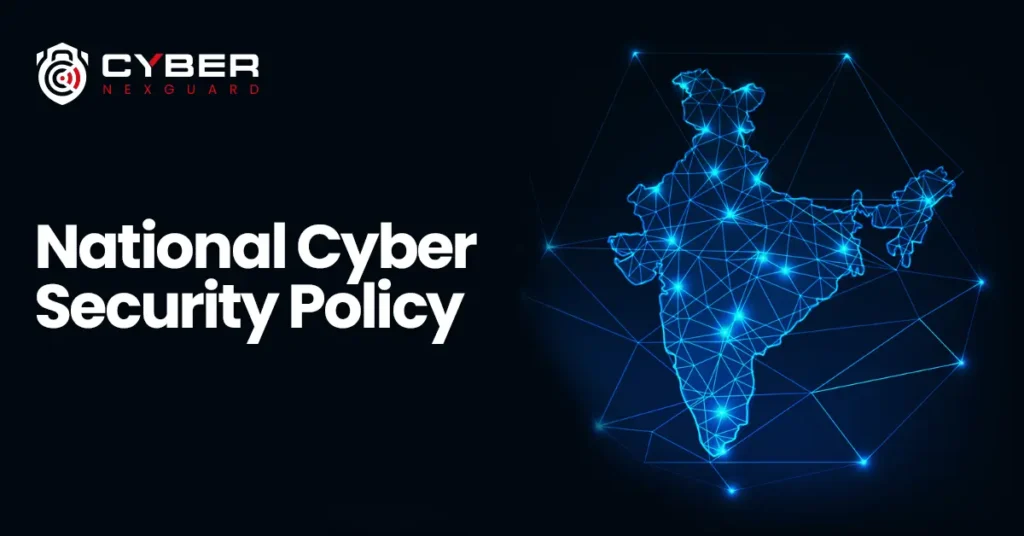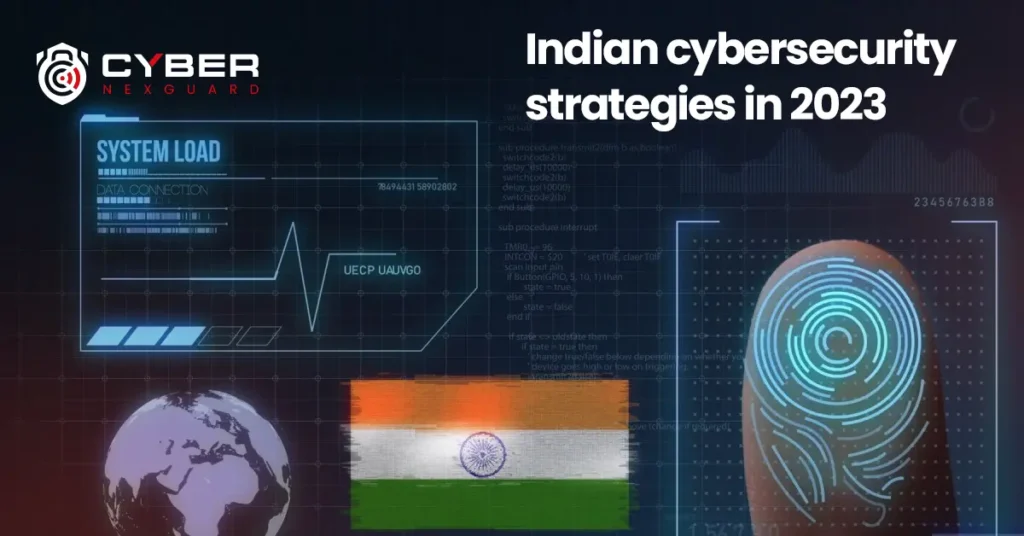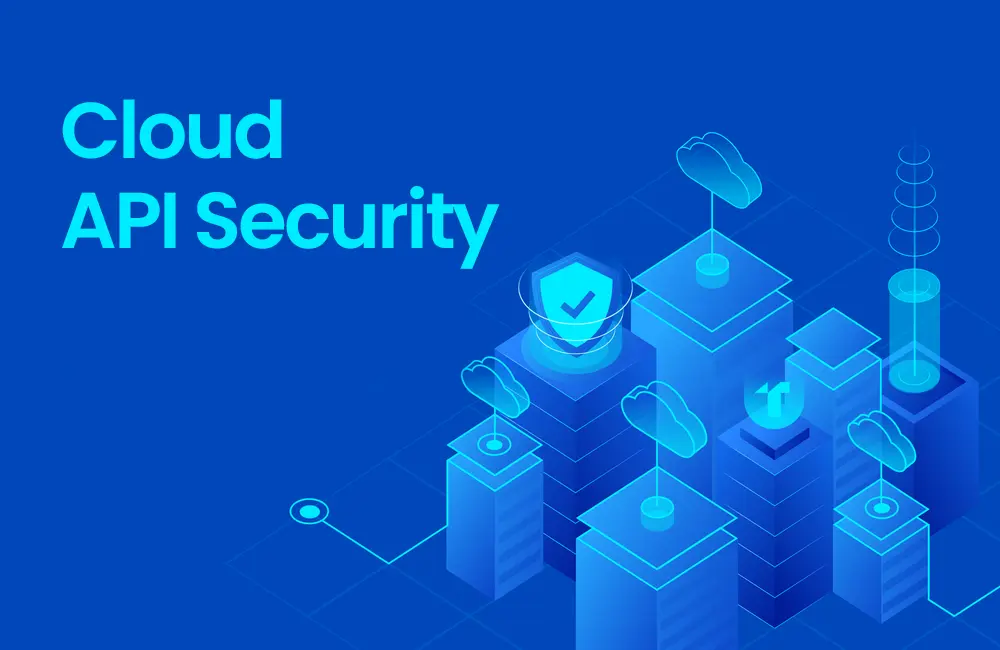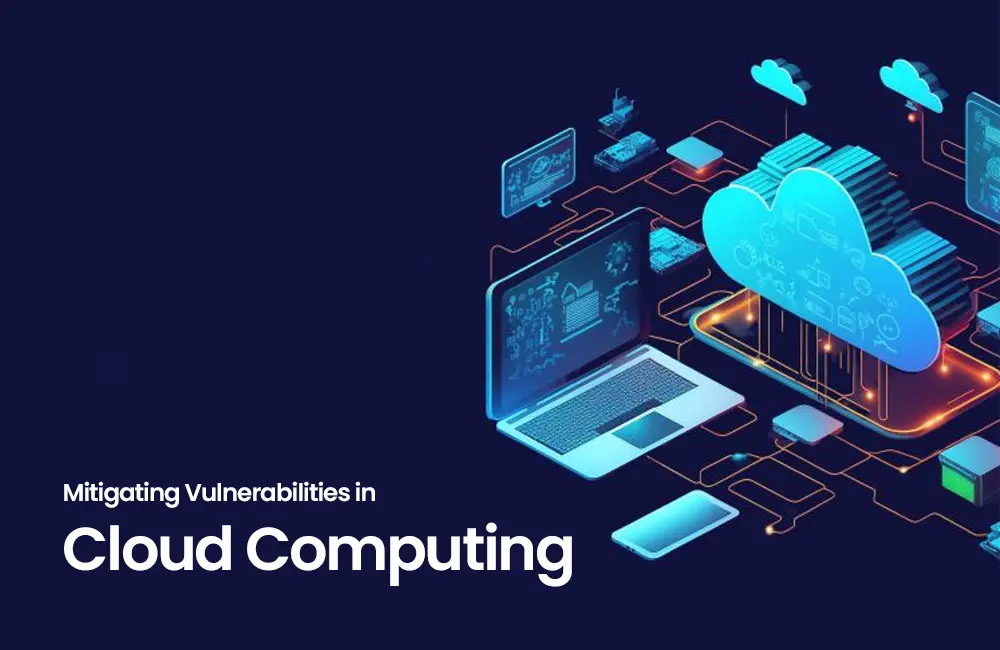National Cybersecurity Strategy, Bharat NCX 2023 Highlights
India’s rapid digital transformation has brought about numerous opportunities, accompanied by an increase in cyber threats. The country has witnessed a substantial surge in internet users, digital transactions, and interconnected devices, making it imperative to address the escalating cyber security challenges.
Importance of National Cybersecurity Strategies

The escalating frequency and sophistication of cyberattacks necessitate proactive measures. Cyber security strategies act as a shield, protecting critical infrastructure, sensitive data, and individual privacy. The emergence of new technologies has made it even more important to have strong measures in place to guarantee a safe digital environment.
Relevance of Strategies Till 2023

As we approach 2023, assessing the effectiveness and relevance of existing strategies is crucial. Cyber threats are dynamic, and strategies must evolve to counter new challenges. This article sheds light on the strategies implemented and their anticipated impacts in the coming years.
Historical Context
Evolution of Cyber Security in India
The evolution of national cybersecurity strategy in India can be traced back to the early days of the internet. From basic antivirus measures to comprehensive strategies, the journey reflects the nation’s commitment to adapting and strengthening its cyber security posture. Understanding this evolution is essential for gauging the effectiveness of current approaches. For more information regarding recent National cybersecurity strategies and cyberattacks follow us on LinkedIn.
Past Strategies and Their Effectiveness

Previous cyber security strategies have played a pivotal role in shaping the current landscape. What works and what needs improvement may be better understood by analyzing the efficacy of various tactics. It also serves as a foundation upon which stronger constructions might be built.
Learnings from Previous National Cybersecurity Challenges
India has faced its share of cybersecurity challenges, from data breaches to ransomware attacks. Learning from these incidents is crucial for developing proactive strategies. It involves understanding the tactics employed by cybercriminals and fortifying defenses against potential threats. If you don’t know about role digital technologies can making you secure? then click here.
Overview of National Cybersecurity Strategies in India
National Cybersecurity Policy

The National Cybersecurity strategy of policy launched in 2013, serves as a comprehensive framework for addressing cybersecurity challenges. It outlines the government’s approach to securing cyberspace, encompassing areas such as critical infrastructure protection, incident response, and capacity building.
Initiatives by Governmental Agencies
Several governmental agencies, including the National Cybersecurity Coordinator’s office and the Indian Computer Emergency Response Team (CERT-In), actively contribute to national cybersecurity initiatives. These agencies collaborate to detect, prevent, and respond to cyber threats, showcasing a coordinated approach.
Collaboration with Private Sectors
Public-private partnerships are instrumental in fortifying cybersecurity. Initiatives like the Cyber Swachhta Kendra (Botnet Cleaning and Malware Analysis Centre) are examples of how the government works with business sectors. This encourages information sharing and joint efforts in combating cyber threats.
Indian National Cybersecurity Strategies in 2023

The SCOPE Convention Centre in New Delhi served as the location for the Bharat National Cybersecurity Exercise (NCX) 2023. This national cybersecurity convention took place from October 9 to 20. This event held considerable national importance. An announcement from National Security Council Secretariat described this event as significant milestone in India’s steadfast pursuit of cybersecurity excellence.
Digital Defense Summit
The occasion functioned as a cohesive forum for more than three hundred attendees. All of these were members of various public and private sectors, government agencies, and organizations. They are all have a shared dedication to protecting critical digital infrastructure. The National Security Council Secretariat (NSCS) of India and Rashtriya Raksha University (RRU) worked together to host Bharat NCX 2023. At the concluding session, Air Chief Marshal VR Chaudhari, Chief of Air Staff, delivered a motivational address to the attendees.
Role of Air Chief Marshal Vivek Ram Chaudhari

Vivek Ram Chaudhari highlighted upon the necessity of national cybersecurity challenges in today’s society. Additionally, he brought up the fact that most future battles would take place online. He also highlighted the relevance of operational technology in the sphere of the Internet. Dr Samir V Kamat is the Secretary DDR&D and Chairman of Defense Research and Development Organization. He specifically mentioned these kinds of events that would strengthen cybersecurity posture of country during his speech at closing session.
Strategic Cyber Insights
Further strengthening the event’s relevance, Lt Gen M U Nair, National Cybersecurity Coordinator, delivered strategic review of India’s cyber domain. His thoughts exposed shifting panorama of cyber dangers, underlining essential role of collective vigilance in defending the nation’s digital assets. Colonel Nidhish Bhatnagar, the Director of RRU, expressed his respect for unwavering devotion of Gol to National cybersecurity during the occasion. He underlined the crucial relevance of such measures in defending India’s digital security. Especially at a period defined by growing digitization and an increased susceptibility to threats.
Bharat NCX 2023 Milestone

According to National Security Council Secretariat, Bharat NCX 2023 is a watershed moment in India’s relentless pursuit of cybersecurity excellence. It highlights the critical importance of cooperation and information exchange among public, private, and governmental stakeholders. Over six days, the activity allowed the participants to engage in hard training. A five-day red-on-blue Live Fire cyber exercise pitted participants’ cyber prowess against that of a formidable opponent. To prepare for actual cyber threats, exercise included strategic track. Where top-level executives could talk about the state of the industry, how to respond to incidents and crisis management.
CISOs Conclave Highlights

Over 200 Chief Information Security Officers (CISOs) from the commercial sector, public organizations, and government were present at Bharat NCX CISOS Conclave. Which took place alongside the main event at Bharat NCX 2023. Professionals in the field got together for a once-in-a-lifetime opportunity to discuss the dynamic nature of cyber threats.
Tech Solutions by MSMEs
The Bharat Global Cybersecurity Expo 2023 was an exposition that highlighted the innovative work of Indian Micro, Small, and Medium-sized Enterprises MSMEs in the cybersecurity industry. These businesses displayed state-of-the-art solutions and technologies at the event. This was to highlight the crucial role that these dynamic organizations play in strengthening India’s national cybersecurity ecosystem.
National Cybersecurity Imperative

During its efforts to strengthen our cyber defenses, Bharat NCX 2023 brought to light the need for a National Cybersecurity Strategy. Governmental frameworks supported by laws, efficient means of sharing danger information, and strengthened public-private partnerships are the desired outcomes of this approach.
In an era marked by the increasing prevalence of digitization, Bharat NCX 2023 serves as a strong reminder of the crucial need of collective vigilance and preparation in defending our nation’s unique digital assets.










